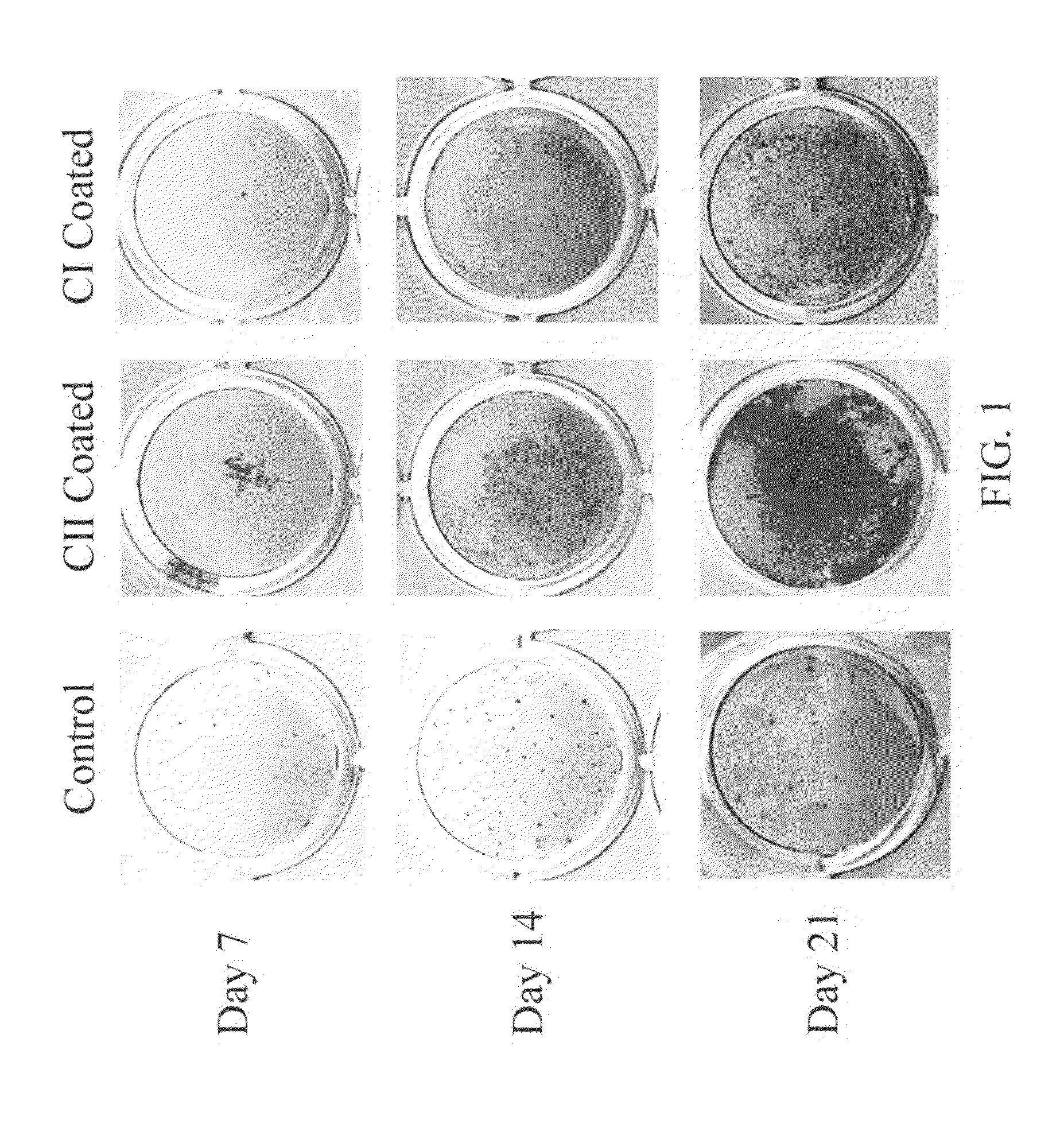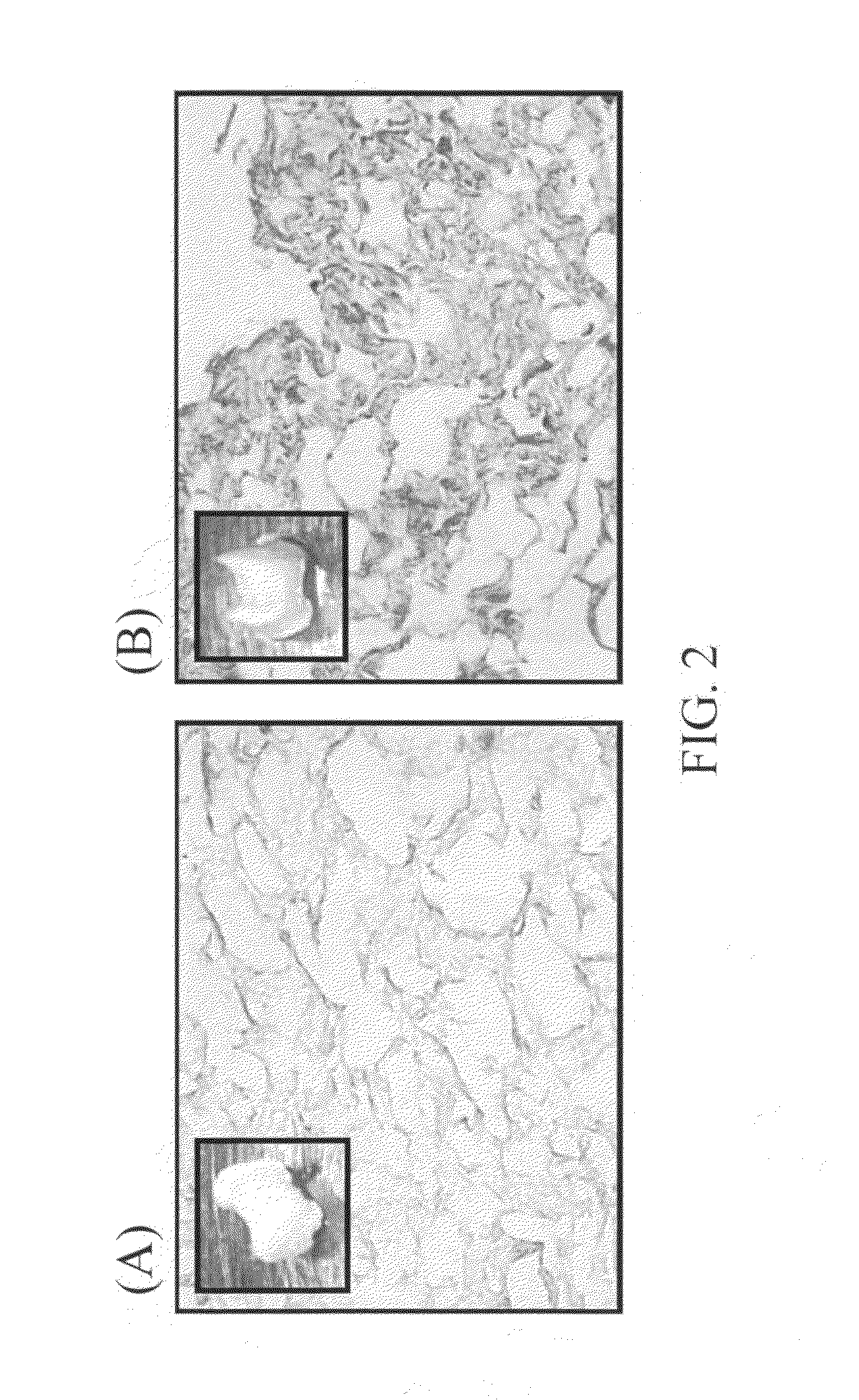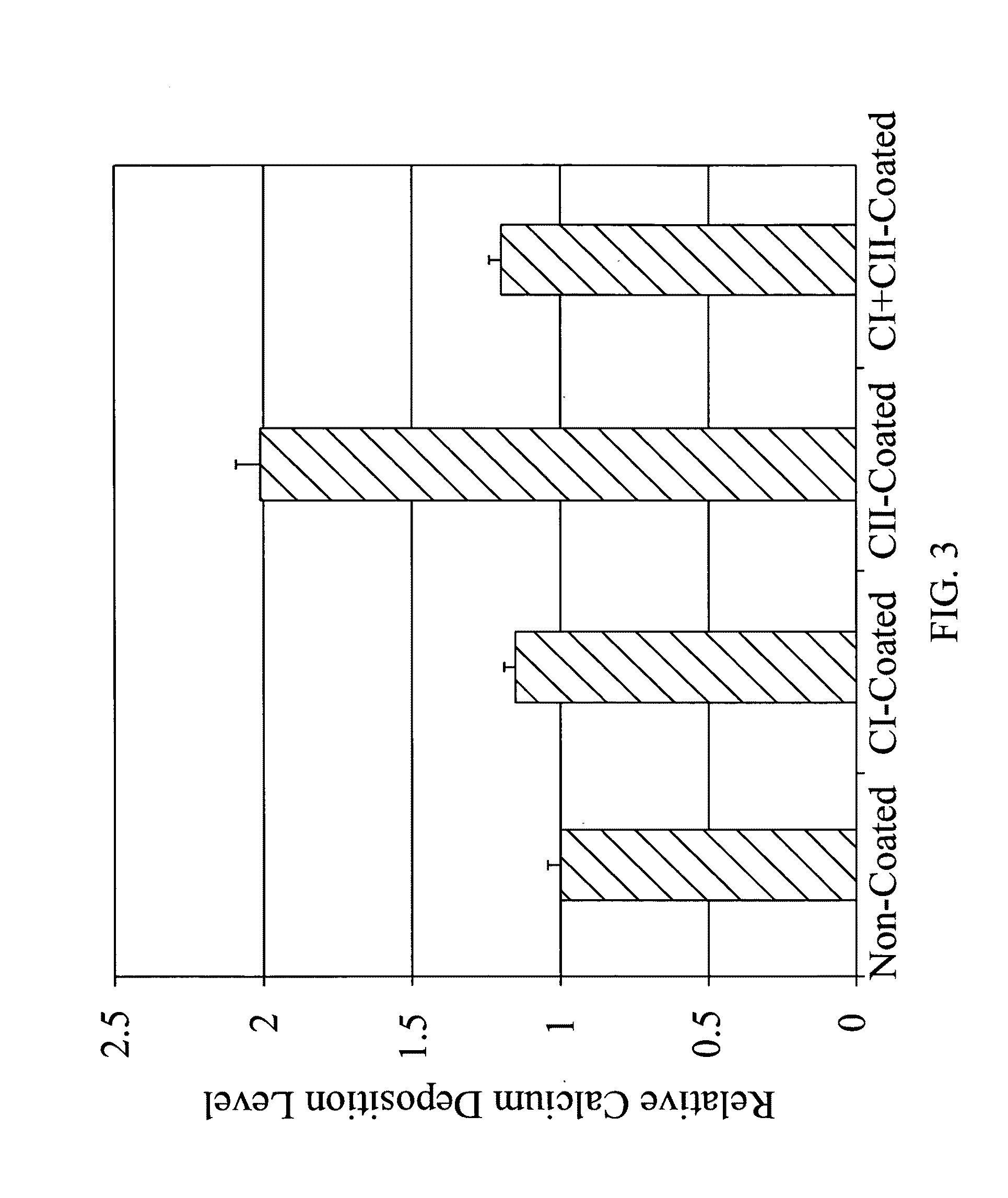Bone implant and manufacturing method thereof
a technology of bone implants and manufacturing methods, applied in the field of bone regeneration, can solve the problems of accelerating osteogenesis, excessive hard tissue, and huge waste of time and money
- Summary
- Abstract
- Description
- Claims
- Application Information
AI Technical Summary
Benefits of technology
Problems solved by technology
Method used
Image
Examples
example 1
The Effect of Type II Collagen on Mesenchymal Stem Cell (MSC) Osteogenesis
In this example, the modulating effects of type II collagen (CII) and type I collagen (CI) on mesenchymal stem cell (MSC) osteogenesis are examined.
MSC Isolation, Cultivation & Storage
Bone marrow aspirates are obtained aseptically from donors (18˜65-year-old) who receive femoral or iliac surgery. Bone marrow is aspirated using a 10 ml syringe. The aspirates are immediately mixed with sodium-heparin, and diluted in five volumes of phosphate-buffered saline (PBS). The cell suspension is then fractionated by overlay on a Percoll gradient (40% initial density, Pharmacia) and centrifuged. The MSC-enriched interface fraction is collected and plated in a 10-cm dish containing 10 ml Dulbecco's Modified Eagles Medium with 1 mg / ml glucose (DMEM / LG, Sigma D5523), 10% FBS, 1× penicillin / streptomycin / fungizone. The medium is changed every four days. When cells reach 80% confluence, they are trypsinized and passaged into ne...
example 2
The Osteogenesis Effect of Type II Collagen Sponge Construct as Bone Implant
In this example, the osteogenic enhancing effects of type II collagen-coated type I collagen scaffold on mesenchymal stem cell (MSC) differentiation is examined.
Fabrication of Three-Dimensional Collagenous Scaffold
Collagens having concentration ranging from 2-20 mg / ml are lyophilized in the 96 well plates. Briefly, 300 μl of type I collagen was loaded in the 96 well plate and lyophilized in a freeze dryer to generate cylinder-like spongy collagenous scaffold as the bone material. After lyophilization, the scaffolds were further coated with type II collagen at a concentration of 5-1000 μg / ml, preferably 20-200 μg / ml, or with 5 mM acetic acid (collagen solvent; as control) for 2 hour at room temperature. After incubation, the remaining solution is removed. The scaffolds were then further washed with PBS and air-dried in the culture hood with UV light on.
MSCs Seeding
Aliquots of 5×105-1×106 human mesenchymal ste...
example 3
The Enhanced Osteogenic Effects of the Type II Collagen-Coated Readymade Bone Materials or Implants
In this example, the osteogenic effects of type I collagen- or type II collagen-coating on poly-lactic acid (PLA) scaffolds / implants are examined.
3D PLA bone scaffolds (herein referring to porous bone materials) are coated with purified ECM proteins (type I collagen or type II collagen) at a concentration of 5-1000 μg / ml, preferably 50-100 μg / ml, or with 5 mM acetic acid (collagen solvent; as non-coating control) for 2 hours at room temperature. After incubation, the remaining ECM solution is removed. The various bone scaffolds are further washed with PBS. The scaffolds are then air-dried in the culture hood under UV light, and stored at 4□ till use.
MSCs Seeding
On aliquots MSCs of 1×105 are suspended in 175 μl of culture medium is seeded into the said PLA bone scaffolds with / without coating collagens on their surfaces. After 2 hours of cell attachment in a 37□ CO2 inc...
PUM
| Property | Measurement | Unit |
|---|---|---|
| Concentration | aaaaa | aaaaa |
| Concentration | aaaaa | aaaaa |
| Concentration | aaaaa | aaaaa |
Abstract
Description
Claims
Application Information
 Login to View More
Login to View More - R&D
- Intellectual Property
- Life Sciences
- Materials
- Tech Scout
- Unparalleled Data Quality
- Higher Quality Content
- 60% Fewer Hallucinations
Browse by: Latest US Patents, China's latest patents, Technical Efficacy Thesaurus, Application Domain, Technology Topic, Popular Technical Reports.
© 2025 PatSnap. All rights reserved.Legal|Privacy policy|Modern Slavery Act Transparency Statement|Sitemap|About US| Contact US: help@patsnap.com



